April 3, 2007, and April 10, 2007. Within a seven-day span, Michigan changed the faces of both its men’s and women’s basketball teams. And on those two days, both programs’ challenges were clear. The men’s basketball team needed to return to postseason glory, and the women’s basketball team needed to consistently win games for the first time in its 34-season history.
One of the new coaches, Kevin Borseth, already knew the Michigan fight song, had grown up in a town of 2,148 people in the Upper Peninsula and had dreamed of someday coaching in Ann Arbor. The other, John Beilein, had never even visited Michigan’s campus before accepting the offer, telling reporters at his farewell press conference in West Virginia that he was “taking a leap of faith.”
Both coaches, regardless of how much they knew about the University, were taking “leaps of faith” by accepting the mission to rebuild the basketball programs. But five seasons later, with cultures and players now fully installed, the men’s and women’s teams are establishing national reputations for success at the same time.
Beilein, known for his 1-3-1 defense and a reliance on outside shooting in his offense, immediately emphasized toughness and intelligence upon his hiring as the men’s basketball coach in Ann Arbor. From his team, as assistant coach Bacari Alexander said in an interview before the start of the 2010-11 season, Beilein expected “guys who are gentlemen and scholars off the court and intense, smart beasts on the court.”
“We say it all the time—I want the students to come and see their friends play, not to see the team play,” Beilein said. “It’s an old saying, but it’s very, very true in what we’re trying to do.”
Under former coach Tommy Amaker (2001-07), Michigan consistently landed top recruits. Even with talent like McDonald’s All-American guard Daniel Horton (2002), No. 28 high school player in the nation Dion Harris (2003) and No. 31 high school player in the nation DeShawn Sims (2006), though, the Wolverines didn’t reach the NCAA Tournament.
Beilein had limited time to recruit after taking the job in Ann Arbor, and his 2008 class consisted of three-star recruits Stu Douglass, Zack Novak and Ben Cronin. “It was crickets, I’ll be honest, when Zack Novak committed,”
Michigan alum and TheWolverine.com writer Chris Balas said. “The first time I wrote that story, everyone was like, ‘Who?’ and, ‘That guy’s never going to be able to win here with guys like this.’
“But Zack Novak is the guy, in my opinion, that is the toughness in the program that had been lacking for at least 20 years, since the Fab Five. And he is really the guy who changed Michigan basketball for the better.”
Beilein was a coach used to working from the ground up—he spent 14 seasons at the community college, Division III and Division II levels before landing his first Division I coaching job at age 39. His first season at Michigan was focused on implementing his system, and the team finished 10-22.
But in one three-week span at the start of the 2008-09 season, Beilein’s little-known freshmen Douglass and Novak helped shock then-No. 4 teams UCLA and Duke. The wins set the tone for Michigan’s first NCAA Tournament appearance in 11 years, where the Wolverines pulled out one more upset, against seventh-seeded Clemson, before losing to second-seeded Oklahoma.
“I think we play well in the underdog role because that’s kind of what Coach has been his whole career,” current men’s basketball administrative specialist CJ Lee, a fifth-year senior on the 2008 team, said. “He’s just kind of embraced it and it’s something he’s very comfortable doing, and I think that just spills over to the team.”
With higher expectations and a preseason No. 15 ranking the next season, the team faltered, finishing 15-17. The next year, with no seniors on the roster, the NCAA Tournament team from two seasons before seemed like a distant memory. With the Wolverines again the underdogs, they dug in—even despite a 1-6 start in Big Ten play. Led by Douglass and Novak, they finished the conference season 9-9 and won the first game of the Big Ten Tournament to earn another spot in the Big Dance.
“We surprised a lot of people freshman year with our success, and then we came out our sophomore year and we had bullseyes on our back—we were ranked high, and we pretty much laid down and let anybody come and attack us,” Douglass said of the 2009-10 season.
This season, seniors Novak and Douglass were ready for the pressure of being expected to succeed. Fresh off of their second NCAA Tournament run in four seasons, the Wolverines were ranked 18th to start the 2011-12 campaign. Michigan started the year with a statement victory over then-No. 8 Memphis, lost by seven to No.6 Duke and then rebounded to beat UCLA by 16 points in the Maui Invitational. After entering Big Ten play with an 11-2 record, the Wolverines have compiled a 14-0 record at Crisler Center this season, including statement wins over No. 18 Wisconsin, No. 9 Michigan State and No. 20 Indiana.
“I think we’ve done a good job this year of trying to ignore where we’re supposed to finish or if we’re supposed to be ‘the team’ or not,” redshirt sophomore forward Jordan Morgan said. “We’ve done a pretty good job this year of just keeping a level head and going to win, whether we’re the favorite or the underdog.”
With two NCAA Tournament appearances in four years, Michigan’s newfound relevancy on a national stage is personified by the Wolverines’ 2012 recruiting class. Mitch McGary, the No. 2 overall high school player in the nation when he made his college decision in November, chose Michigan over perennial basketball powers like Duke, Kentucky and North Carolina. With Glenn Robinson III and Nick Stauskas also committed to the Wolverines, the class is considered the 10th strongest in the nation by ESPN.
The Maize Rage student section, unorganized during the Fab 5 days and unintimidating during the NCAA Tournament drought, has also emerged in full force in line with the team’s success. In Beilein’s first season, the Athletic Department sold 632 student season tickets. This year, ticket sales climbed to 2,643.
“The first year I got student tickets (in 1989), I sat in the upper bowl with my back to the wall, in the very last row, and I could barely hear the whistle—there was just no student atmosphere in that building,” Balas said. “But I think for a long time, there have been people who have really wanted to get behind Michigan basketball, and now they’ve got a reason.”
* * *
Before Borseth was hired as the women’s basketball coach, only one head coach in the program’s history could boast a winning record and multiple postseason appearances. Most of the current roster was fresh off of a record-setting, 30-game Big Ten losing streak that spanned parts of three seasons (2005-07).
“The first year, at Big Ten Media Day, (Borseth) was getting a lot of, ‘I can’t believe you took that job, it’s a death trap and nobody can win there,'” Carly Benson (2005-09) said. “I think that lit a fire for him and for us, too. These people don’t respect us, they don’t know how good we are. … I think the biggest thing he’s been able to change is the respect around the program.”
Now, contending in the Big Ten has become an expectation. The 2011-12 squad is 18-7 overall and 9-2 at Crisler Center, with a commanding double-digit win over No. 8 Ohio State the highlight of the conference season to date. Michigan has reached the postseason in three of Borseth’s four seasons, with a potential NCAA Tournament berth still in reach this year.
“Our challenges have been a little bit different from other programs because there isn’t a tradition where we have banners hanging (in Crisler),” Borseth said. “Our goal coming in was first of all to give everybody the right experience, and then slowly climb our way out and work our way to the top. It’s a whole process—it’s not a quick fix thing.”
In his first season in Ann Arbor, Borseth adopted shorter, more focused practices, and encouraged his players to come in on their own for individual skill development. Players like Benson, a shooter, spent an hour per day with former assistant coach Mike Williams working on skills like quickness at the basket, three-point shots and explosiveness around the rim.
“One of the best things about Borseth’s coaching staff is not only their positivity but also their commitment to working with you on an individual level,” four-year captain Krista Clement (2004-08) said. “I can remember the coaches being very available to open up the gym for us for shooting, ballhandling and defensive drills.”
The Wolverines instantly felt a difference in the attitude and talent level of the team. As their confidence increased, the wins followed. In January 2008, the Wolverines beat Michigan State for the first time in six years, snapping a nine-game losing streak against the Spartans. Four days later, still riding the momentum from the Michigan State victory, Michigan traveled to Madison to face the Badgers. After the pregame shootaround, Borseth walked up to his team.
“He said, ‘I just found this stat. This cannot possibly be true—have you guys never won a (Big Ten) away game? No one on this team?'” Benson said. “We were juniors and seniors at that point and we had never won an away game, and we won that game. It was just crazy, the change that happened. It was almost like we just felt it overnight. We were just rejuvenated, and it was what we needed.”
The Wolverines’ win over Wisconsin in overtime that night was their first Big Ten road victory since 2004. Michigan finished its first regular season under Borseth 16-12, played in its first postseason game since 2002 and made it to the WNIT quarterfinals. Two years later, the Wolverines made it back in the WNIT and advanced to the Final Four during the most successful postseason in Michigan women’s basketball history.
Even with two years of tournament success under their belt, senior captain Courtney Boylan sees last year’s sweep of Ohio State as the moment when she knew her team had established a culture of winning. After upsetting the 12th-ranked Buckeyes at Crisler Center in the Big Ten opener, the Wolverines traveled to Columbus and found themselves down 14 points in the second half. Michigan clawed back within one point with 1:22 left in the game and won 69-66, their first win at Ohio State in eight seasons.
The Ohio State comeback was the epitome of Borseth’s mantra for his team’s progress—what he calls “good, old-fashioned hard work and getting it done the right way.”
Even with old-fashioned work, though, the other element to attracting top talent and sustaining success for the men’s and women’s squads in the years ahead are the brand-new South Campus facilities.The Crisler Center renovation, of which new seats and high-definition scoreboards are already in place, started in 2011 and will be fully completed in 2013. The completion of the $23.2 million Player Development Center, which opened in January and houses a practice facility and coaches’ offices, means the men’s and women’s teams no longer have to share a court and coordinate practice times.
“Michigan was always known as a football school, so when it comes to basketball season, we knew as players, we always had to do a little bit extra than other schools did to get the same kind of acclaim,” Daniel Horton (2002-2006) said. “At Michigan, we were always the underdog. Maybe people, nationally, didn’t expect as much from us.”
But the University’s commitment to new basketball infrastructure over the past three seasons is hard proof that for years to come, Michigan plans to be nationally known for more than just the Big House. And with this season’s chance for postseason runs for both squads just a month away, the nation’s eyes will be on the buildings next door.

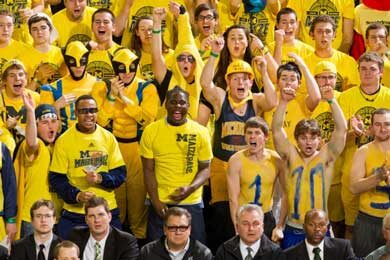

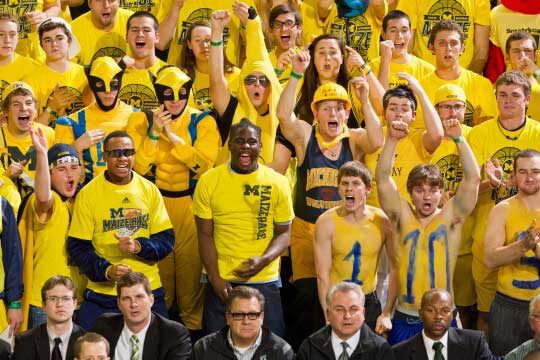
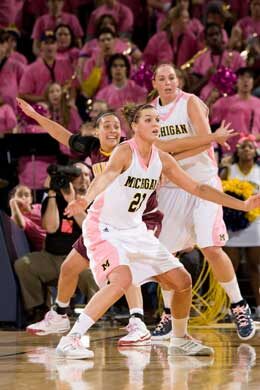
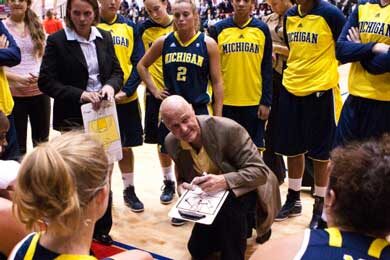

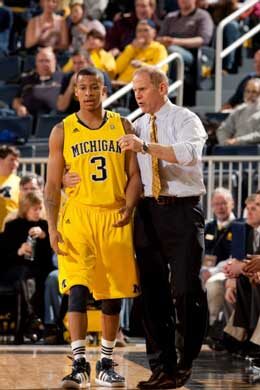
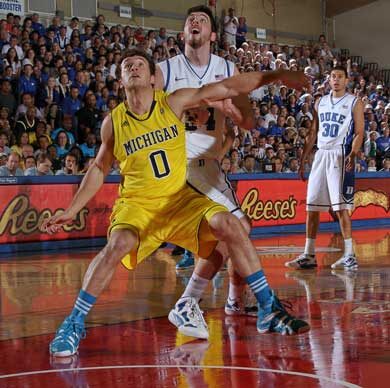


mark tray - 2012
this is an informative article. Nice job!
Reply